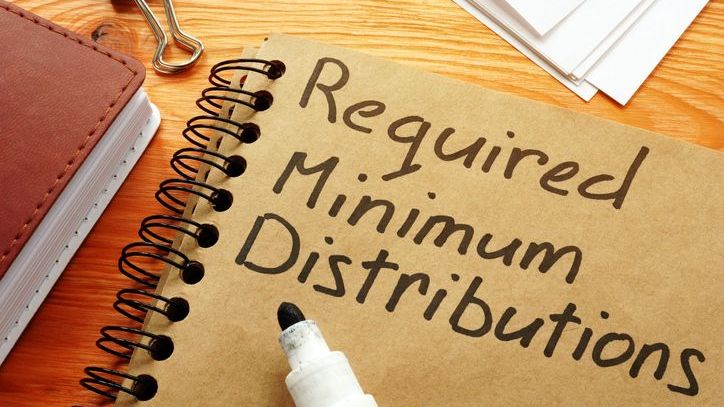
Do withdrawals from my pre-tax IRA and/or 401(k) accounts made before I turn 73 count toward my RMDs? Or do RMDs start at 73 without regard to prior withdrawals? I’m 70 now and still working and collecting Social Security, but plan to retire in 2024.
– Luis
Unfortunately, withdrawals from an IRA or 401(k) before age 73 do not count toward your eventual required minimum distributions (RMDs). However, you still may be able to reduce your RMDs if that’s your goal.
Do you need additional help planning for RMDs or managing your tax liability in retirement? Speak with a financial advisor today.
Purpose of RMDs
RMDs are designed to force you to take withdrawals from tax-deferred retirement accounts so that the money can be taxed and avoid growing tax-deferred indefinitely. Understanding that this is the expressed purpose of RMDs can help you put these mandatory withdrawals in context as you plan around them.
In other words, if you’re worried that RMDs will interfere with your distribution plan and increase your bill – that’s the point. Of course, RMDs won’t impact everyone. Some people will need to withdraw more than the minimum amount to cover their living expenses.
As you alluded to in your question, RMDs now start at age 73. The RMD age, which was previously 70.5 and then 72, rose to 73 under the SECURE 2.0 Act. The age will increase again in 2033, rising to 75 for people who turn 74 after Dec. 31, 2032. (If you’re preparing for RMDs, consider talking through your strategy with a financial advisor.)
Calculating RMDs

The RMD calculation process is pretty straightforward in both concept and application. The idea is that RMDs spread your distributions out over your life expectancy so there’s no remaining balance in your account when you pass away.
To calculate your mandatory distribution, you simply divide your account balance from Dec. 31 of the previous year by the life expectancy factor that corresponds with your age. You can find these on one of several IRS life expectancy tables. You then withdraw that amount from your account(s) annually.
To illustrate how this works, let’s assume someone is 78 years old in 2024. Since they’re married to someone who isn’t more than 10 years younger than them, our hypothetical retiree would refer to Table III (Uniform Lifetime) and see that their life expectancy factor is 22.
Since it’s 2024, this person would need their account balance from Dec. 31, 2023. Let’s assume it was $500,000. They would then simply divide $500,000 by 22 and get an RMD of $22,727. This is the amount our hypothetical retiree would need to withdraw throughout the course of 2024. They’ll repeat this calculation the following year with their new account balance and updated life expectancy factor.
If you have more than one IRA, you’ll have to calculate the RMD for each account separately. However, when it comes time to withdraw the money, you can take the entire distribution from one account, if you choose. This is known as the IRA aggregation rule. (But if you need help calculating or managing your RMDs, consider matching with a financial advisor.)
How to Reduce RMDs

There are no magic tricks here. To reduce your RMD, you have to reduce your account balance as of Dec. 31 of each year.
Roth conversions are a useful tool for doing that. Converting pre-tax assets into after-tax Roth assets requires you to pay income tax on the money now in exchange for tax-free growth in the future. And since both Roth IRAs and Roth 401(k)s are not subject to RMDs, conversions help reduce the size of your pre-tax account balance, on which RMDs are based.
If our hypothetical retiree in the example above converted, say, $50,000 of their $500,000 balance before Dec. 31, 2023, their RMD would be based on a $450,000 account balance. This would lower their RMD to $20,454.
Does this mean you should be doing Roth conversions? Not necessarily. You still need to evaluate your entire savings, tax and financial situation to ensure it makes sense within the totality of your financial plan. However, RMD planning is one piece of that puzzle.
Two things that I think are worth highlighting here:
- Be mindful of conversion taxes. This is about reducing your RMDs going forward rather than reducing your current tax bill. Doing a Roth conversion will likely increase your tax liability for the year in which you complete it.
- Your conversion does not count toward last year’s RMD. Referring back to our original example, if the person does a Roth conversion in 2024, they will still need to withdraw $22,727 to satisfy their 2023 RMD.
Do you have more questions about retirement planning? Consider matching with a financial advisor today.
Next Steps
RMDs are meant to draw down account balances and generate tax revenue for the IRS. By design, there isn’t a whole lot you can do to get around them. However, if you plan multiple years at a time, Roth conversions may help you reduce the balance your RMD is based on.
If you don’t need your RMDs to cover living expenses, you may want to have a plan for what you’ll do with that money once you withdraw and pay taxes on it. If you are charitably minded, then a qualified charitable distribution (QCD) may be something you want to consider as well.
Retirement Planning Tips
- Retirement planning can be complex – from calculating RMDs to managing your tax liability – but a financial advisor can help with this process. Finding a financial advisor doesn’t have to be hard. SmartAsset’s free tool matches you with up to three vetted financial advisors who serve your area, and you can have a free introductory call with your advisor matches to decide which one you feel is right for you. If you’re ready to find an advisor who can help you achieve your financial goals, get started now.
- SmartAsset’s retirement calculator can help you estimate how much money you’ll need to save to afford your desired lifestyle in retirement. This free tool also helps you track whether you’re on pace to hit your savings goal.
Brandon Renfro, CFP®, is a SmartAsset financial planning columnist and answers reader questions on personal finance and tax topics. Got a question you’d like answered? Email AskAnAdvisor@smartasset.com and your question may be answered in a future column.
Please note that Brandon is not a participant in the SmartAdvisor Match platform, and he has been compensated for this article. Questions may be edited for clarity or length.
Photo credit: ©iStock.com/Cavan Images, ©iStock.com/designer491